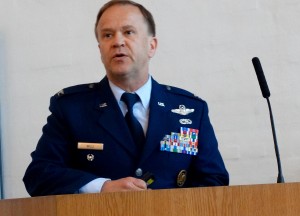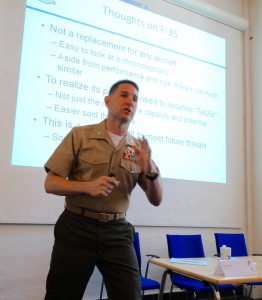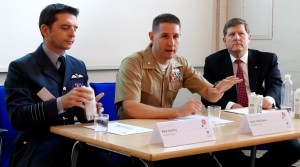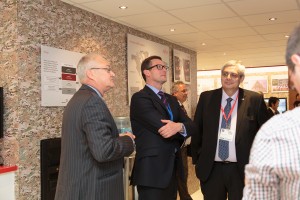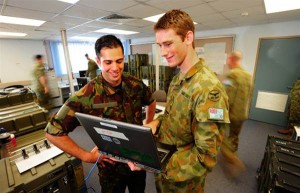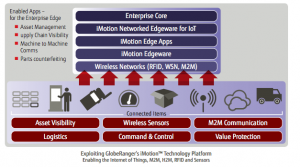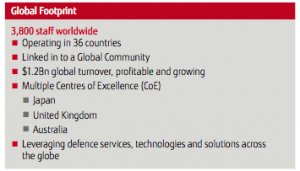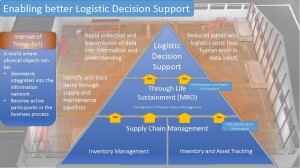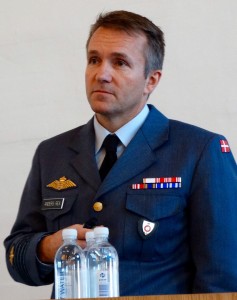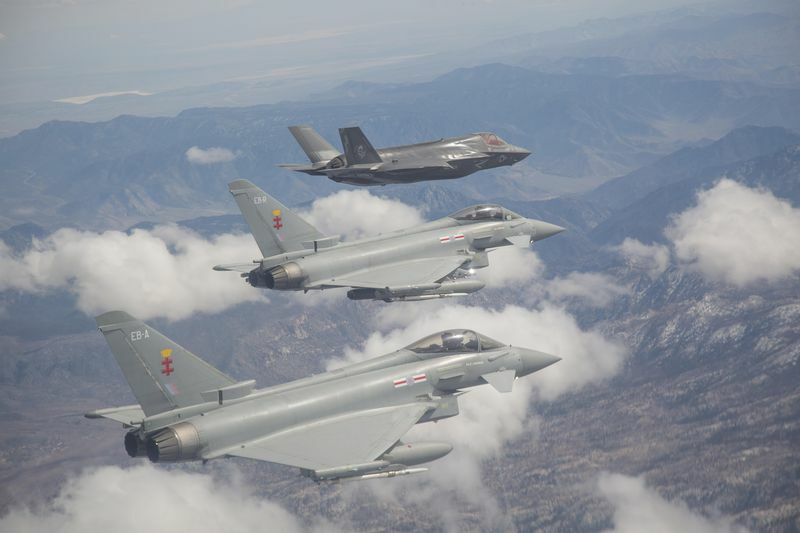2015-04-27 By Risk Intelligence

The Maghreb region has long been a rich breeding ground for Islamic extremism and this is true of the security problems in Egypt, Mali and Libya.
These problems, coupled with a growing social divide within the populace, rising food and fuel prices, and an increase in youth unemployment in many countries, have made social unrest a major problem for regional governments.
The recent emergence of the Islamic State (IS) in both Iraq and Syria and its sudden growth in popularity among Muslim youth has surprised many in the Western world, although within the Maghreb countries signs of discontent and re-assertions of sub-group rather than nationalist identities were already being seen (including the Arab spring movements). For North African youth, there are social factors fuelling their discontent, but also pull factors that make joining Islamic extremist and terrorist organizations such as Ansar al-Sharia, al-Qaeda and IS as an attractive option.
This article identifies the strength of support for IS in North Africa and provides an assessment on the potential risks for maritime interests and terrorist activity related to potential IS operations.
The Rise of IS
The growth of IS in North Africa has been rapid, and IS has already established strong links with other militant jihadist groups across North Africa. These groups have embraced the ideologies of IS and some have pledged allegiance or support. There is not widespread public support for IS at present, and most in regional countries are as shocked and upset by the violent scenes that the media portrays of the group’s activities as are international audiences. De- spite this, there has been a steady stream of volunteers who have now travelled to Iraq and Syria to fight on the behalf of IS, with Algeria and Tunisia reportedly providing the largest number of regional volunteers and fighters for the group.
IS, under various names, emerged in Iraq and Syria as part of the Tawhid Wa al-Jihad in the immediate aftermath of 9/11 and the US-led coalition invasion of Afghanistan and was established under the leadership of the Jordanian Islamist Abu Musab al-Zarqawi. Initially, Zarqawi pledged his allegiance to Osama bin Laden and established the group al-Qaeda in Iraq (AQI). AQI became a major force in the insurgency movement after the coalition forces invaded Iraq in 2003.
After Zarqawi’s death in 2006, AQI created an umbrella organization, the Islamic State in Iraq (ISI). However, ISI’s activities were gradually being weakened by the US military surge operation and also by the creation of the ‘Sah- wa councils’ led by Sunni Arab tribesmen, who did not embrace the brutal tactics practiced by ISI. By 2010, Ibrahim Awad Ibrahim Ali al-Badri al-Samrrai (commonly known as Abu Bakr al-Baghdadi) had become the leader of ISI and he began to rebuild the military capability of the group. At its core is the aim to establish a ‘caliphate’, a state ruled by a single political and religious leader according to Islamic law. ISI promised to destroy the borders of Lebanon and Jordan and to “free Palestine” in its rather broad manifesto. Baghdadi’s calls found support from Muslims around the world, a claim backed up by the number of foreign fighters who have joined the group, certainly during the past 12 months.
ISI was responsible for carrying out many attacks in Iraq and Baghdadi was also instrumental in the establishment of the al-Nusra Front, an ISI-focused group fighting President Bashar al-Assad in Syria. In April 2013, Baghdadi announced a merger of IS forces in Iraq and Syria and created the Islamic State in Iraq and Syria/the Levant (ISIS). This was a move not supported by all factions, and led to some violent infighting between the groups. How- ever, following some brutal and violent actions, ISI became the predominant military rebel force fighting President Assad’s forces in Syria, and it also experienced significant military success in Iraq. Its capture of significant territory in Iraq led to Baghdadi’s ‘official’ announcement of a caliphate and an ostensible name change to the Islamic State.
Reaching out to North Africa
IS has grown in popularity among militant Islamic groups in North Africa. While widespread popular support is limited, IS has become a banner to rally to for disaffected and/or militant groups. By some estimates, 25,000 fighters from the region (the Middle East and North Africa) have been recruited to fight in Syria and Iraq. There are some groups that have pledged their allegiance, support or both to IS and in particular to Baghdadi as their de facto leader. Within North Africa, and in particular Libya, Tunisia and Algeria, there appears to be a growing level of support within domestic Islamic groups, with some groups and individuals now conducting operations under the IS franchise and flag.

The growth in popularity of IS internationally has been remarkable, but many analysts believe that the group’s growing support has been in the main part due to its dynamic use of the internet and social media for recruiting and propaganda purposes, to a greater extent than any other group before. It has been become quite proficient at releasing its own video evidence of IS achievements and support. As well, the Western-led intervention in Syria and Iraq has been a useful recruiting tool, just as AQI used the US-led invasion of Iraq to rally jihadists to join the insurgency.
Within North Africa, of the groups that have expressed support for IS, there is no specific intelligence to suggest that al-Qaeda in the Islamic Maghreb (AQIM) has done so, although small individual groups that had been operating under the AQIM franchise may have pledged allegiance to IS. Al-Qaeda affiliated groups are under some pressure, however, as IS appears to offer a dynamic – and militarily successful – franchise as al-Qaeda’s ‘brand’ declines.
In a recent development in March 2015, Boko Haram, the Nigerian-based Islamic group, went public with its pledge of allegiance to IS. Although this group is principally involved in its own attempt to establish an Islamic state in northern Nigeria, its violent methods are similar to that of IS. There is intelligence reporting to suggest that fighters from Boko Haram were involved in the conflict in Mali. Uncorroborated reporting also suggests that they have joined Islamic groups in Libya, Algeria and Tunisia. Boko Haram is the largest Islamic terrorist group that has pledged its support and allegiance to IS at this time, but is focus is primarily in Nigeria and there is little evidence to suggest that its allegiance is much more than rhetorical at this time.
Mauritania
The strongest Islamic group in the country remains AQIM, which has recently been active and it has always found a strong recruiting ground within the country. In October 2014, there were some arrests in the mining town of Zouerate after reports that active recruiting for IS was taking place. There has been little to corroborate this media report, but judging by regional influences, it has some credence and should not be discounted.
There has been some cross-border movement of Islamic groups from Mali, and although these groups have not been identified as being franchised to IS, they could well be part of the growing trend in following IS. The Mauritanian military has increased surveillance along the country’s eastern borders in recent months and cross-border insurgency is no longer a common occurrence.
With some rampant poverty and a high incidence of political corruption, support for IS’s ideals could grow in Mauritania, but any direct insurgency threat to the government is unlikely in the short term. Overall, the expected support for IS from the general public in Mauritania is low but may trend upwards. Among Islamist groups, expected support for IS is medium and may trend upwards.
Morocco
There have been reports that individuals are being recruited from Morocco through social media outlets. Indeed, arrests of recruiters have been reported frequently and Morocco appears to be one of the key recruiting grounds for IS. In August of 2014, Moroccan ministry sources identified that over a thousand Moroccan nationals were fighting on behalf of IS in Syria and Iraq. During 2014, the police reportedly dismantled a large cell of IS recruiters. In support of this operation, Spanish authorities in Ceuta and Melilla were also active in the interdiction of recruiters and would-be fighters in transit.
Recruitment into the ranks of IS has been made a criminal act in the country, with the security services and police making significant arrests. They have also linked into joint operations with the Spanish authorities, in particular within the Spanish enclaves. Moroccan officials are also preparing for the prospect of returning fighters establishing themselves into insurgency groups within the country, with an emphasis on maintaining the IS goal – that is, the establishment of the Muslim caliphate.
Overall, the expected support for IS from the general public in Morocco is low. The expected support for IS in Islamist groups in Morocco is low, but has the potential to trend upwards in some areas, especially in Western Sahara.
Algeria
Algeria has been synonymous with terrorism since the
1990s. The North African wing of al-Qaeda has its origins in the bitter Algerian civil war in the 1990s. Since then, terrorism within the country has taken on a more international jihadist agenda. AQIM remains the main terrorist group in the country, although there has been some growing support for IS. On 30 September 2014, a previously unknown group ‘The Soldiers of the Caliph- ate in Algeria’ or Jund al-Khilafa, who were responsible for the execution of a French tourist in 2014, pledged their allegiance to IS. Additionally, the al-Huda Battalion of Islam in Maghreb has also pledged allegiance to IS. The strength and organizational structure of either group remains unknown, but the Algerian security services are conscious of such groups establishing themselves with- in the national territory and they have stepped up intelligence-gathering operations.
Media and intelligence reports have highlighted the in- creasing numbers of Algerians who have gone to Iraq and Syria to fight alongside IS. This could create a similar problem for the Algerian government when and if these individuals return, as was experienced after the Afghan/ Soviet war in the 1980s. Like Morocco, Algeria is taking measures to ensure that the interdiction of returning jihadists is a priority for the security agencies.
Overall, the expected support for IS from the general public in Algeria is low but has the potential to trend upwards. The expected support for IS among Islamist groups in Algeria is medium with the likelihood of trending upwards.
Tunisia
Tunisia is very much in the spotlight following the attack on the Bardo museum in Tunis on 18 March 2015. During the attack, 17 tourists were killed by several gunmen. In the aftermath of the shooting, IS quickly claimed responsibility for the atrocity, although this is speculative and there is no public evidence that the group or individuals responsible were connected to the organization.
Within the country, the Islamist group Okba ibn Nafaa Battalion has pledged allegiance to IS. It is also likely that there are many individuals who have expressed support for IS. There is a large Salafist following in the country, which has tried to push for a stronger Islamist code and the removal of a secular government. Intelligence reporting has identified that Tunisians, by a significant margin, make up the largest numbers of foreign fighters in Syria and Iraq.
Following the attack in Tunis, many Tunisians marched in a show of unity against Islamist terrorist activity. There appears to be strong opposition to jihadist groups in the country, with increased support for the new secularist government elected in November 2014. But high unemployment and poor prospects for the youth of the country could test this support and become push factors for IS recruitment.
The expected support for IS from the general public in Tunisia is low, and is unlikely to increase. The expected support for IS in the more militant Islamist groups in Tunisia is high and is trending upwards, which is likely to keep the number of Tunisians fighting in Iraq and Syria high.
Libya
With the country facing variety of competing factions vying for political control, there are significant opportunities for militant groups to flourish. Ansar al-Sharia, the Muslim Brotherhood and AQIM are all emerging with various degrees of effectiveness. Many of the militias that grew out of the civil war that toppled Qaddafi have tried to hold on to the power that was achieved in the first year after the revolution. However, some of these groups have either sided with the old government, or the new and un-elected government, or have shifted allegiance to militant groups. Within the country, at least three groups have pledged allegiance to IS, although there are likely also to be hitherto unknown organizations and militia who have similar goals and ideals to IS.

Groups in Libya have some freedom to move and train, making it easier to send fighters to neighboring countries such as Egypt, Tunisia and Algeria, as well as south into Niger and towards Mali. The murder of a number of Egyptian Coptic Christians in Libya was a catalyst that triggered military interdiction by Egypt, but it has not brought further military intervention from EU or US forces. Italy has deployed naval units to monitor the coast of Libya, but this is principally to prevent irregular migration and to provide protection and support for Italian oil exploration companies operating in Libya.
Islamic State of Libya, Lions of Libya, and Shura Council of Shabab al-Islam are three of the main groups that have expressed support and or allegiance to IS. These groups were probably part of Ansar al-Sharia but have since changed their allegiance. In the east of the country in Derna, militias claiming allegiance to IS claimed part of the city as their stronghold. But other militant groups, such as Ansar al-Sharia and the Abu Salim Martyrs Brigade are active in the area, all with their own agendas (such as to secure control of oil fields and port facilities). Derna has been a high-profile ‘success’ for IS but the city has been under attack by Libya military units for some months, including air support from Egypt. At the time of publication a major offensive was being launched.
Most of the more egregious atrocities carried out in Libya recently, including the attack on the Corinthia Hotel in Tripoli and the execution of Egyptian Coptic Christians, have been committed under the IS franchise. As well, IS-affiliated militias have been active in Sirte, where they are fighting Misratan militias that are nominally part of the Libya Dawn alliance, the more Islamist of the competing governments in Libya. The Misratans have accused the IS militias of being aligned with old Qaddafi factions (a charge usually leveled at the Misratan’s opponents in Libya’s army) and containing foreign fighters.
Overall, with the militias in Libya preoccupied with their own political and tribal allegiances, there is not wide- spread support for IS. However, the conflict is creating space for IS to gain more and more of a foothold by recruiting local groups to its cause. While the civil war continues, these groups will continue to be active and per- haps present the most sizable threat posed by IS within North Africa itself.
Mali
Although not part of the Maghreb, Mali borders Mauritania, Algeria and Niger. As such, it has a demonstrable effect on the North African countries, with a variety of Islamist groups with similar goals to IS. Groups such as Ansar Dine, the Islamic Movement for Azawad, and the Movement for Unity and Jihad in West Africa (MUJAO), as well as AQIM are all operating within the country. There is no evidence that these groups have formed any allegiance with or support for IS.
Mali has been under intense pressure from Islamist groups, which have been fighting both international and Malian military forces for nearly two years in the north of the country. The largest Tuareg group in Mali is Ansar Dine, with other groups such as MUJAO, the Signed in Blood Battalion and the Islamic Movement for Azawad (IMA) all being active.
Overall, the expected support for IS from the general public in Mali is low, but higher in the north of the country with the potential to further trend upwards. The potential support for IS among militant Islamist groups in Mali is high could solidify into practical linkages. At the present time, however, these groups are more focused on their immediate local goals and allegiances.
Potential Impacts on Maritime Operations
With the exception of Libya and Tunisia, maritime operations have not yet been affected by the influence of IS. In Tunisia, the attack at the Bardo museum in Tunis led to the cancellation of numerous cruise ships visiting the port; other than this, other commercial maritime operations in Tunis have not been disrupted.
In Libya there has been some significant disruption to port operations, especially those concerning the export of oil products, and in the main ports of Tripoli and Benghazi where random indirect artillery fire has been report- ed. As well, vessels have been accused on aiding different factions in the civil war; the tanker ARAEVO was hit by airstrikes in the port of Derna by the Libyan air force. There is some concern regarding the safety of ships’ crews, although no specific attacks have been leveled at, or reported by, vessels calling into Libyan ports. There is, however, a high level of risk to foreigners in Libya and ship operators and crew should be aware of this. However, most of the risks in Libya are related to the insecurity from the civil war, rather than the threat of IS – other than in key areas where IS-aligned militias are active. This said, there are growing terrorism concerns and the US Coast Guard in April imposed ISPS Level 2 and other measures on vessels calling US ports that previously called in Libya.
Irregular migration from the North African coast across the Mediterranean has a significant effect on maritime operations. Large numbers of migrants are taking advantage of the increased patrolling by European naval and coastguard units to make the crossing to Italy and Malta. They do this as there is now a better chance of interdiction and rescue from these naval assets. Ships operating in the general area should be mindful of the risks of migrant vessels and their obligations to render assistance when required.
There have been no incidents or any significant increase in stowaways from North African ports since the emergence of IS within the confines of North Africa. There is some anecdotal evidence that some stowaway incidents are under-reported, with ships opting to avoid the bureaucracy that comes with the detection of stowaways. IMO reporting for the first quarter of 2015 is not available for analysis, but ship operators and masters should make sure that appropriate measures are taken while in ports.
Further Expected Developments
Currently, IS forces may number around 30,000 fighters in Iraq and/or Syria, of which about half are ideologically supportive of the group, with the rest believed to be either coerced through fear/forced recruitment. There is further support among other Islamist groups throughout North Africa, especially in Libya. IS has become a formidable adversary, and although it has not met strong military opposition in Iraq or Syria, it has withstood a concerted coalition offensive for several months and is still gaining support. In recent months, IS has lost a lot of the military gains made during 2014, and intelligence suggests that much of its military effectiveness has been damaged.
However, IS’s brutality is likely place limits on its appeal. It has shocked most Muslims throughout the region. Militarily, coalition forces are likely to further increase military action against IS targets. The governments in the Maghreb are also likely to increase their crackdown on IS supporters, recruiters and potential fighters. Support for the group will be seen as a criminal act in most North African countries.
In the Maghreb, the political conditions in Libya and Mali are confused and volatile: a situation that IS could exploit to give them a strong base from which to expand their ideology. This could allow IS to expand its presence on the ground in the region, rather than just being a force for recruiting fighters for operations in Syria and Iraq. Attacks by IS in Libya and Mali, if they increase in frequency and severity, would attract the interest of European powers that have vital interests to protect in these countries and the neighboring areas.
Conclusion
The IS group has become the standard bearer for Islamic extremism in North Africa. Its origins in Iraq, and the speed of its influence across neighboring countries to jihadist groups that see it, as the answer to Western oppression, has been nothing short of phenomenal.
2015 will be a key year for all countries in the Maghreb, as well as neighboring Egypt. Government forces are engaging Islamic groups as well as supporters and recruiters. The biggest problem that regional governments will face is that if IS fails in Iraq and Syria then it is possible that large numbers of jihadists will return to their own countries and fuel the prospect of increased terrorist activity in that region. The dispersal of large numbers of fighters from Iraq and Syria could also be a problem for European governments and security services as returning fighters and those seeking asylum to avoid retribution in their own countries could sow the seeds of potential terrorist activity.
Within North Africa, further attacks as seen in Libya and Tunisia could spread to Morocco, where there is a large tourist infrastructure, and an attack against Western tourists anywhere in the region is now considered highly likely. Algeria is already experiencing an increase in Islamist activity and although the country is not a popular tourist destination there are visitors from the EU and beyond who have been put off visiting the country.
IS, and any Islamic extremist group in North Africa, could well be in a strong position to challenge governments in the region through attacks on government, diplomatic, commercial, religious or tourist centers. The security services in all these countries are reportedly mindful of the potential problems that could, and in some places already do, exist and they are taking radical steps to counter the threats. 2015 will be a difficult year for these governments, as extremists attempt to capitalize on perceived Western anti-Islamic policies. As such, IS related activities will be a major security factor in the year ahead.
This piece first appeared in Strategic Insights, No. 57 (April 2015) and is republished with permission of our strategic partner, Risk Intelligence.
The publication Strategic Insights can be obtained via subscription at the following linkL
http://www.riskintelligence.eu/maritime/strategic_insights/

